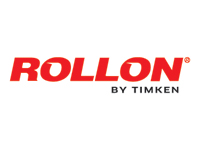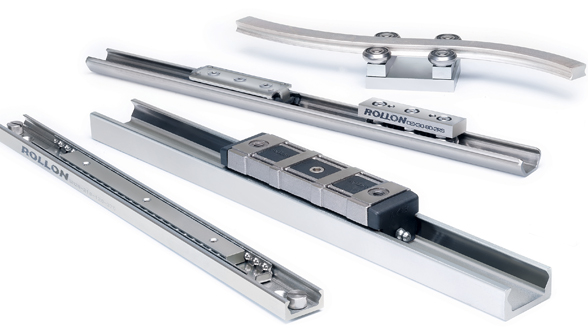Corrosion Resistance: Application based solution
Several treatments for high resistance to corrosion and solutions in stainless steel definethe range of linear and telescopic rails and actuators from Rollon Group.
Corrosion is an irreversible process that alters the nature of any steel component after exposure to humidity or substances with acidic or basic pH. The technical characteristics of the material change, rust appears and the metal starts to break down.
For linear or telescopic rails, or, more generally, components of linear motion systems, corrosion causes fast and inevitable deterioration of sliding quality and weakens the structure of the component in question, with dangerous consequences for the efficiency of any system.
For this reason, it is crucial that every solution be designed and built to accommodate the characteristics of the environment where it is installed: an excellent rail, even if it’s precisely sized and performs correctly, will ruin quickly in a strongly corrosive environment if it has not been treated suitably. Its shortened life span would be an inevitable disaster.
This is why Rollon offers a wide range of different materials and anti-corrosion treatments for its products. The goal is to offer the best solution for any specific application, which increases reliability and system efficiency.
For most demanding applications in railway systems, for example,the required corrosion
resistance standard for components is 500 hours in saline mist, according to ISO 9227 specifications that determine the Salt Spray Test (see the sidebar). The Rollon Aloy treatment that Rollon offers for these applications exceeds the standard by 44% with 720
hours of resistance in saline mist.
Now, let’s look at Rollon’s solutions for fighting corrosion:
• Rollon Aloy: this galvanizing process involves high resistance passivation. It offers very high resistance to corrosion and is indicated for rails used in the railway sector, for special vehicles and in the transport sector in general, therefore in outdoor applications. The treatment has a thickness of 15 μm and a resistance to corrosion in saline mist up to 720 hours: a level of effectiveness that makes it the ideal solution for all underfloor applications in trains.
• Chemical nickel plating: the process offers high resistance to corrosion caused by chemicals, acids or bases. It is the perfect solution in applications related to the food industry where direct contact with food is not involved (which require the use of stainless steel). It is also perfect for the medical sector. Chemical nickel plating has a thickness of 10 μm.
• Rollon e-coating: this is a cataphoresis treatment. Rollon e-coating can be paired with a color for the rails, normally black, and is used in contexts where product aesthetics are important. Appearance is, in this case, on the same level as efficiency: the treatment has a maximum thickness of 30 μm and makes it possible to achieve a level of corrosion resistance that permits
700 hours in saline mist.
• Electro-galvanization: applied in compliance with the ISO 2081 standard, Rollon uses this treatment as its standard for all of its rails. This is the best for products that operate indoors, such as industrial machinery, packaging machinery, and intralogistics systems. Electro-galvanization has a thickness of 8 μm and offers a level of corrosion resistant that permits up to 120 hours in saline mist.
If the anti-corrosion treatments are not sufficient or suitable for the work environment, Rollon also offers a wide range of linear and telescopic rails in stainless steel AISI 316L, which can guarantee maximum resistance to corrosion.
The line of linear actuators from Rollon is available with different drives and linear motion systems. It comes entirely made of anodized extruded aluminum profiles. For the most demanding applications, specific versions of the axes are available made in Anticorodal aluminum 6060 and 6082 for the extruded pieces and stainless steel for the bearings, linear rails, nuts and bolts and other components. Rollon’s commitment in the fight against corrosion also contemplates the future: the Italian Group’s research and development department is working on designing new treatments against corrosion to offer products that perform better than ever.
SALT SPRAY TEST
The Salt Spray Test is the reference standard for measuring resistance to corrosion, defined as a number of hours of permanence in an environment with saline mist. In compliance with ISO 9227, the rails are put inside a test room and a solution of 5% sodium chloride (NaCl) with a pH of 6.5 is poured over them. The NaCl solution is administered with a continuous misting process at 35° for the entire duration of the test. Assessments of the quality of the surface protection are made at intervals set for the different samples.






